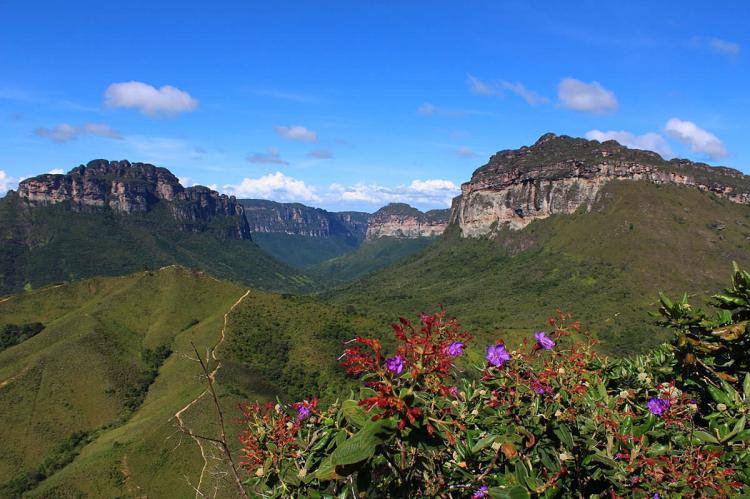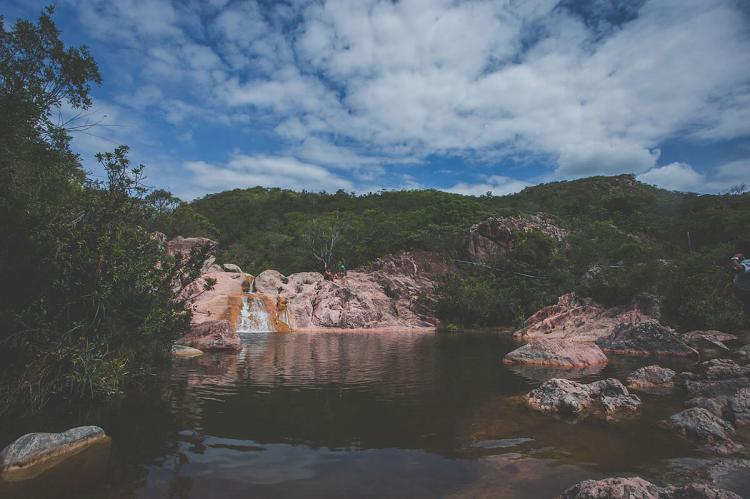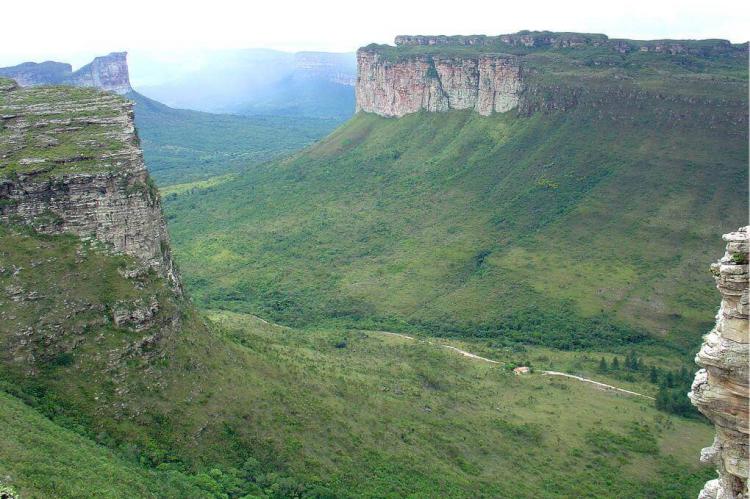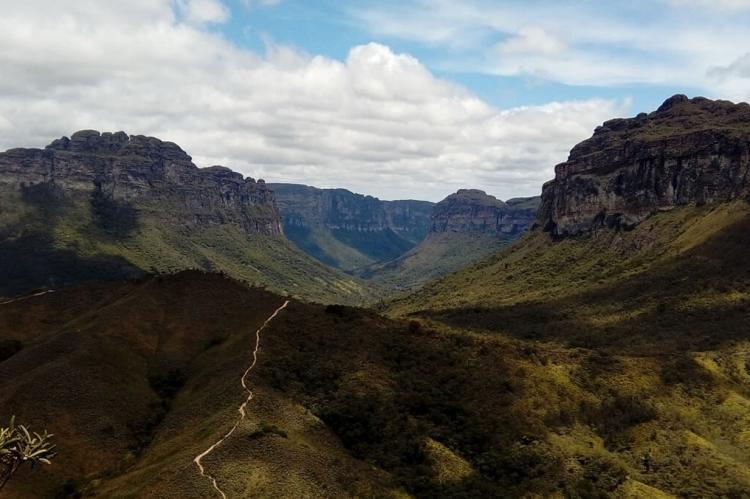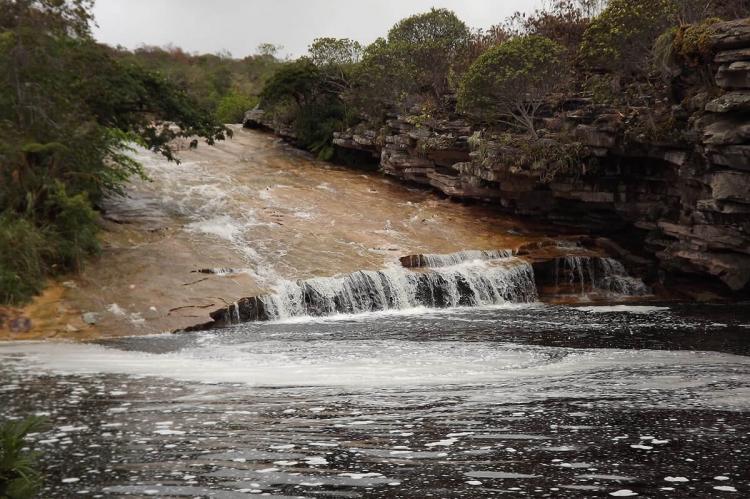Chapada Diamantina: Exploring Nature's Masterpiece in the Brazilian Highlands
Nestled in the northeastern reaches of Brazil, Chapada Diamantina unfolds as a vibrant region of extraordinary landscapes and rugged mountainous terrain within the Brazilian Highlands. Chapada Diamantina National Park is a testament to the region's ecological importance.
Chapada Diamantina
Exploring Nature's Masterpiece in the Brazilian Highlands
Nestled in the northeastern reaches of Brazil, Chapada Diamantina unfolds as a vibrant region of extraordinary landscapes and rugged mountainous terrain. This region is geographically diverse and culturally rich, spanning approximately 38,000 sq km (14,600 square miles) within the Brazilian Highlands.
Chapada Diamantina, an extension of the Serra do Espinhaço, commands attention with its vast expanse covering 58 municipalities. Located on the Atlantic Plateau in central Bahia state, this region has an altitude ranging from 500 to 1,000 meters (1,600 to 3,200 feet). The plateau acts as a natural watershed, directing its flow into the São Francisco River, De Contas River, and Paraguaçu River.
The region boasts several mountain groups, each contributing to its allure:
- Serra do Sincorá: Home to the iconic Morro do Pai Inácio, this mountain range offers panoramic views of the landscapes, attracting tourists and nature enthusiasts.
- Serra da Chapadinha: Characterized by rocky cliffs and canyons, this range houses the Fumaça Waterfall, one of Brazil's highest waterfalls.
- Serra do Candombá: Known for picturesque valleys, caves, and crystal-clear blue water pools like Poço Encantado and Poço Azul.
- Serra das Paridas: Featuring a mix of valleys, waterfalls, and unique rock formations, including attractions like Ribeirão do Meio waterfall and Pai Inácio Cave.
- Serra do Ramalho: Situated in the southwestern part, this mountain range showcases rugged landscapes, canyons, and the Rio de Contas.
Chapada Diamantina National Park
Chapada Diamantina National Park, an integral part of the Chapada Diamantina region, is a testament to the region's ecological importance. Administered by the Chico Mendes Institute for Biodiversity Conservation, the park covers 152,142 hectares (375,950 acres) in the rugged Serra do Sincorá. The highest point in Bahia, Pico do Barbado, at 2,036 meters (6.680 feet), resides within its boundaries.
The park's elongated range influences moist air currents, resulting in higher rainfall, particularly in the eastern part. This unique climate nurtures diverse ecosystems within the park.
Cave systems, formed by the region's rivers, house prehistoric archaeological sites with rock paintings from the pre-Columbian period. These sites offer glimpses into the rich history and cultural heritage of the Chapada Diamantina.
Flora and Fauna
The National Park hosts a mosaic of unique vegetation types, combining elements from the Caatinga, Cerrado, and Atlantic Forest biomes. From Caatinga xerophytic formations at lower altitudes to Atlantic Forest vegetation along watercourses, the park's diverse landscapes foster various plant life.
Rupestrian fields, covering two-thirds of the park, showcase endemic species such as Hippeastrum solandrifoliu, Alcantara nahoumii, Cryptanthus diamantinense, and others. These unique ecosystems contribute to the park's rich biodiversity.
The park is a haven for avian and mammalian species, including the endemic hooded visorbearer hummingbird. Protected birds like the white-necked hawk, Bahia tyrannulet, and ochre-marked parakeet find refuge, while mammals like the cougar, jaguar, and giant armadillo roam its diverse landscapes.
Conservation Challenges and Significance
While Chapada Diamantina dazzles with its natural wonders, it faces conservation challenges. The delicate balance between preservation and human impact underscores the importance of sustainable practices. Conservation initiatives strive to protect individual species and safeguard the intricate web of life woven within the Chapada Diamantina region and its National Park.
Conclusion
In the heart of northeastern Brazil, Chapada Diamantina unfolds as a captivating narrative of geological wonders, cultural richness, and biodiversity. Each facet contributes to the region's unique charm, from the rugged peaks and waterfalls to the ancient rock paintings. Delving into the secrets of Chapada Diamantina unveils not just a geographical landscape but a living testament to the intricate dance between nature and humanity, inviting future generations to explore and appreciate the wonders it holds.
